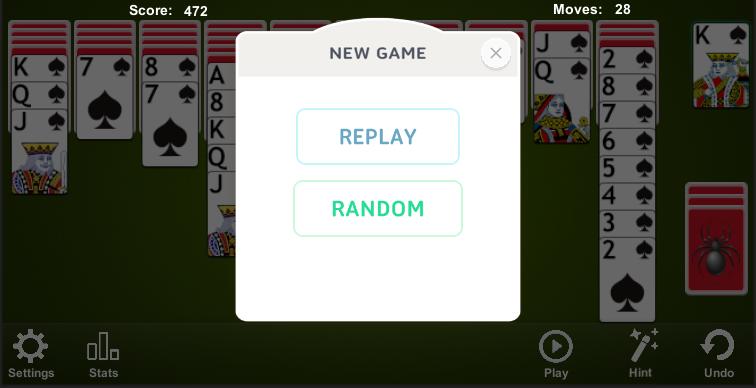

Spiderette: Only one pack, a Klondike layout with 7 stacks ranging from 1 to 7 cards in each.Relaxed Spider: Does not require all spaces to be filled before redealing.Spider 1 Suit: Same as classic Spider solitaire, except this game is played with only 1 suit instead of 4, usually Spades.

Spider 2 Suit: Same as classic Spider solitaire, except this game is played with only 2 suits instead of 4, usually Spades and Hearts.Given its popularity, numerous Spider variants exist: Each time the stock is used it deals out one card to each stack. The Tableau consists of 10 stacks, with 6 cards in the first 4 stacks, with the 6th card face up, and 5 cards in the remaining 6 stacks, with the 5th card face up. The 50 remaining cards can be dealt to the tableau ten at a time when none of the piles are empty.Ī typical Spider layout requires the use of two decks. The tableau piles build down by rank, and in-suit sequences can be moved together. Initially, 54 cards are dealt to the tableau in ten piles, face down except for the top cards. The main purpose of the game is to remove all cards from the table, assembling them in the tableau before removing them. The game originates in 1949, and its name comes from a spider's eight legs, referencing the eight foundation piles that must be filled to win the game. Spider is a type of patience game, and is one of the more popular two-deck solitaire games.


 0 kommentar(er)
0 kommentar(er)
